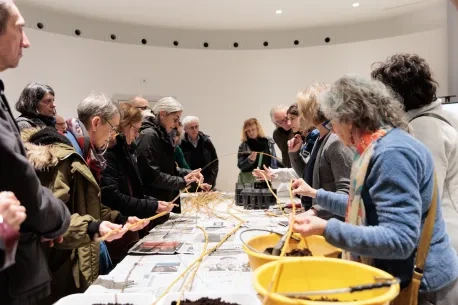Aveiro STEAM City Journal 2: get to know the project latest achievements
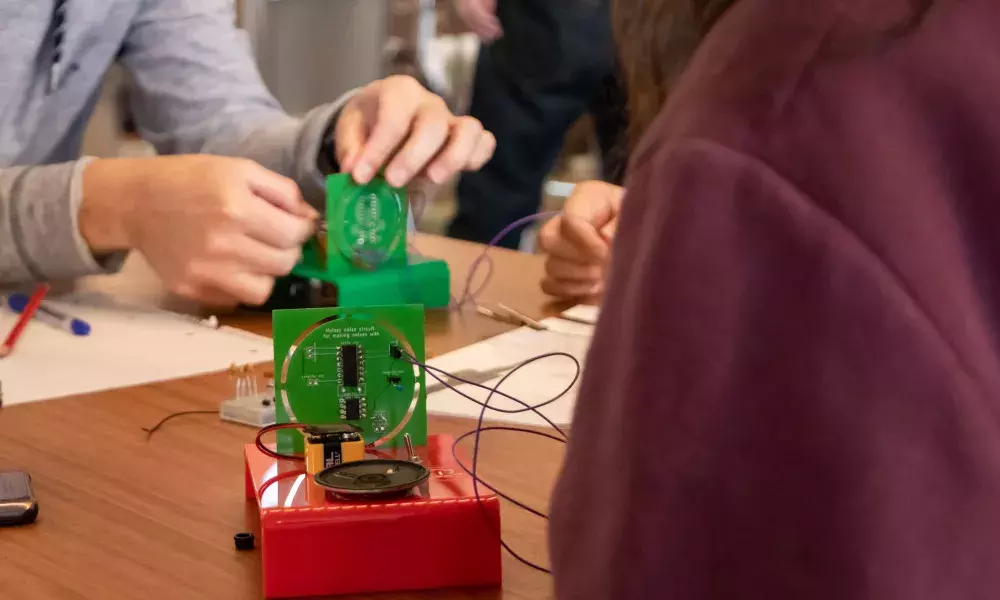
Executive Summary
“Aveiro STEAM city” (ASC) intends to boost the use of new technologies in the public space, together with the aim to make these technologies accessible for a common public, such as students, teachers and citizens in general.
The city of Aveiro is committed to develop a proper technological urban center through the creation of the first Living Lab of the city, that integrates a number of solutions – demonstrated by different use cases in the domains of mobility, energy and environment – able to capture data that all convey into a business intelligent digital urban platform.
Nevertheless, the project doesn’t rely just on technology, but can count on the strong educational offer of the city to produce a new range of talents – including artistic, creative and human sciences areas – with a STEAM approach (adding the “A” for Arts and creativity to the domains of Science, Technology, Engineering and Maths) and ensuring that supply and demand for new digital skills and competences are matched, in order to contribute in terms of added-value produced by employees in the city.
The project, approved under the topic “Jobs & Skills”, started in November 2018 and it’s coming to a conclusion, formally by the end of April 2022. It represents a strong investment of 6.1 million euros, with funding from the European Commission through the UIA initiative of 4.9 million euros.
Aveiro STEAM city represents the backbone of the city’s digital transformation strategy, a big political program called Aveiro Tech City, strongly endorsed by the Mayor, Mr. José Ribau Esteves, and developing at a fast pace.

“Aveiro STEAM city” (ASC) intends to boost the use of new technologies in the public space, together with the aim to make these technologies accessible for a common public, such as students, teachers and citizens in general.
The city of Aveiro is committed to develop a proper technological urban center through the creation of the first Living Lab of the city, that integrates a number of solutions – demonstrated by different use cases in the domains of mobility, energy and environment – able to capture data that all convey into a business intelligent digital urban platform.
Nevertheless, the project doesn’t rely just on technology, but can count on the strong educational offer of the city to produce a new range of talents – including artistic, creative and human sciences areas – with a STEAM approach (adding the “A” for Arts and creativity to the domains of Science, Technology, Engineering and Maths) and ensuring that supply and demand for new digital skills and competences are matched, in order to contribute in terms of added-value produced by employees in the city.
The project, approved under the topic “Jobs & Skills”, started in November 2018 and it’s coming to a conclusion, formally by the end of April 2022. It represents a strong investment of 6.1 million euros, with funding from the European Commission through the UIA initiative of 4.9 million euros.
Aveiro STEAM city represents the backbone of the city’s digital transformation strategy, a big political program called Aveiro Tech City, strongly endorsed by the Mayor, Mr. José Ribau Esteves, and developing at a fast pace.

Addressed Challenges
As the digital transformation of Aveiro passes through the development of quality jobs, the very core of the project aims to contribute to the development of skills for human talents in Aveiro, starting from kids attending primary school and then identifying training needs and developing training programs to meet the challenges of the local business environment, in particular, regarding the qualification and requalification of human resources.
“Aveiro STEAM city” (ASC) tackles this crucial challenge, with a number of interventions placed on different layers: education, training, ICT enabling infrastructure, tech sensors and devices, urban data platform.
ASC addresses a number of challenges in particular:
- To attract and retain talent, namely innovative technology-based organizations, researchers, digital industries, entrepreneurs and other national and international stakeholders to the city of Aveiro, promoting it as one of Europe's pioneering cities for testing and experimenting with 5G and IoT-based digital products and services;
- To potentiate the development of technological solutions in the urban environment, especially the testing and development of new digital tools, through the provision of an advanced communications infrastructure and a digital urban platform with data analytic capability, which together constitute the open digital laboratory at city scale;
- To enhance the transition of the city of Aveiro to a knowledge-based economy, with the ultimate goal of improving the quality of life of its citizens.
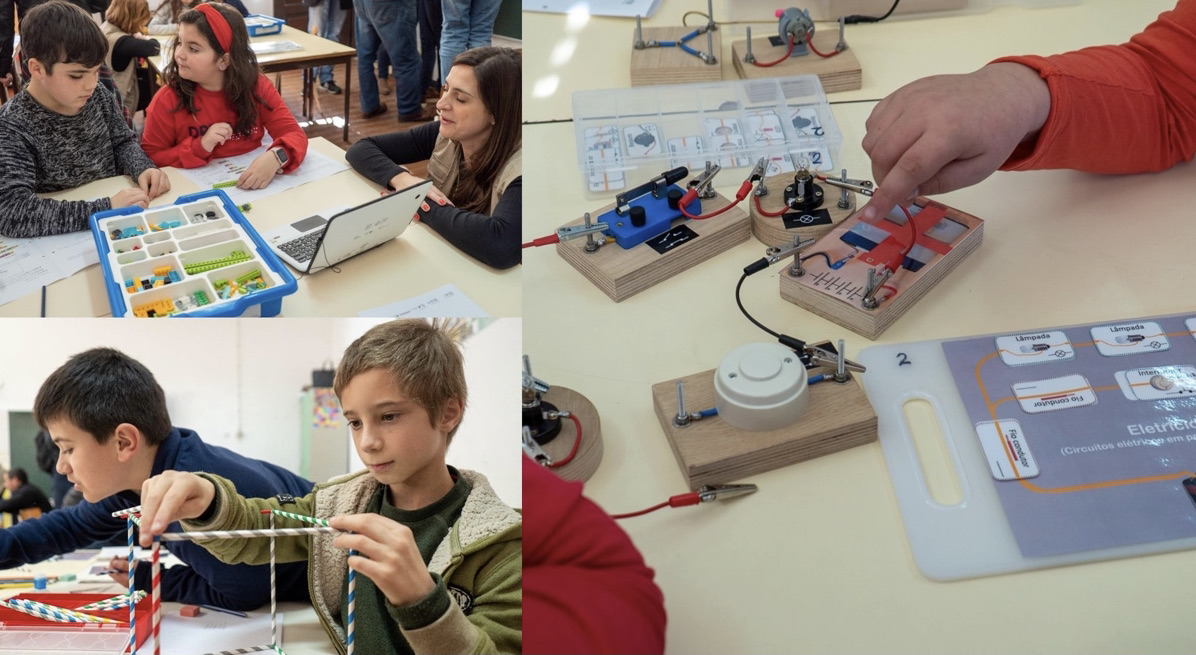
Project's main actions
The project is articulated on 4 main axes:
- Education: this axis includes a number of actions, such as the Tech Labs in schools, the STEAM training for teachers, the STEAM resources platform’s development and the Code Hero program. All these activities aim at providing in schools the equipment necessary for teaching pupils STEAM subjects and at providing teachers skills and professional training.
- Training: this axis includes a number of actions, such as the Labour Observatory’s deployment, the STEAM training in Academia and local businesses, the Tech City Bootcamps and the Criatech artistic residences.
- Technology, Services and Apps: this axis includes a number of actions, such as the Urban platform’s development, the fibre infrastructure and sensors’ network, the 5G communication infrastructure and the living lab’s use cases deployment (mobility, environment and energy use cases).
- Challenges: this axis in more crosscutting and it includes a number of open contexts, such as the 5G challenges, the Aveiro Urban Challenges, the Mobility challenge.
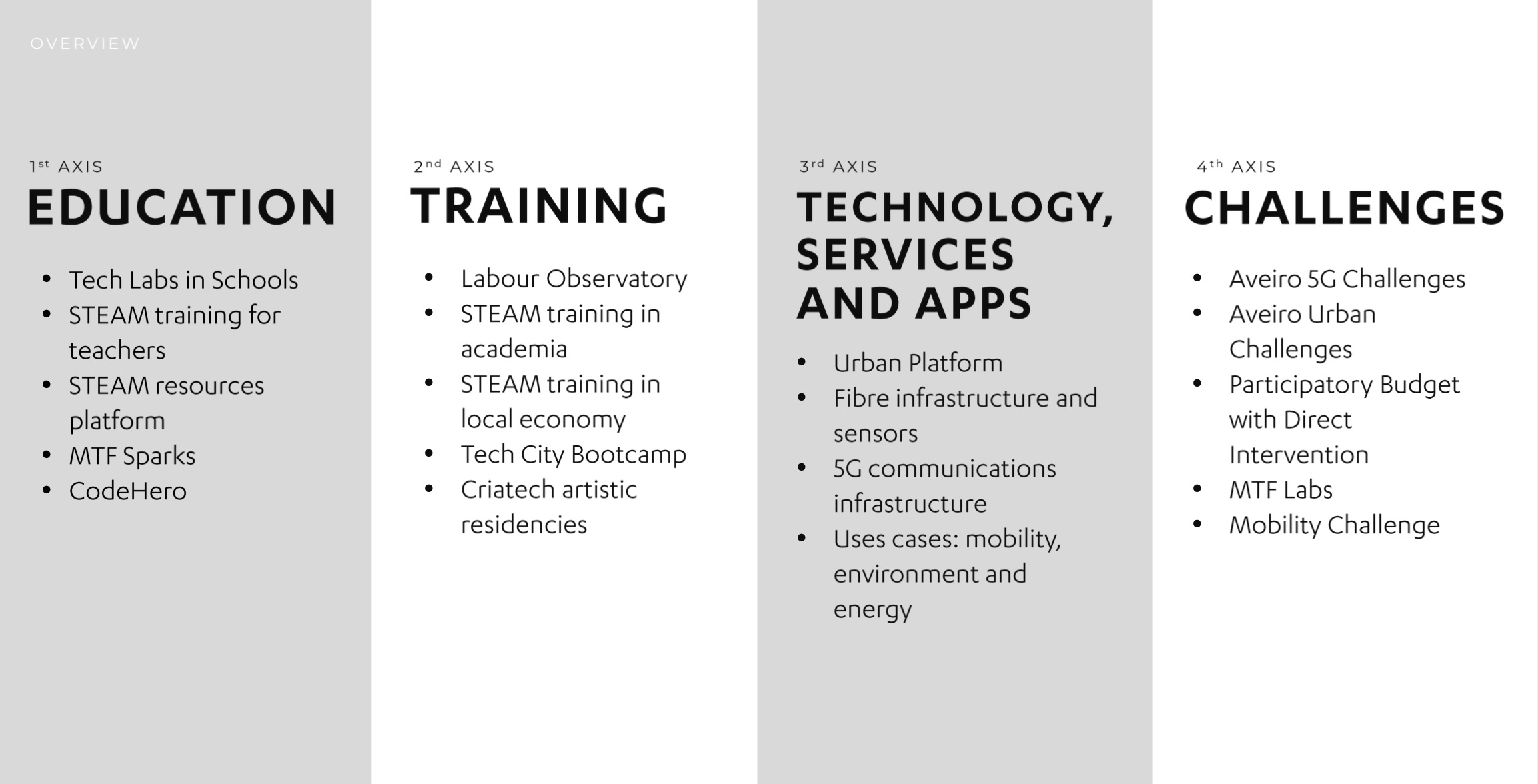
For the Aveiro local authority (MUA), among the numerous activities carried out in 2020, the most important results of the year – also given the COVID-19 pandemic - are surely to be linked to the Tech Labs’ (axis 1) set up. Through the efforts of the civil servants from the Municipality it has been possible to install 31 Tech Labs in Primary Schools, to provide training for 76 teachers and to now guarantee the support to the teachers in classrooms. The main goal here is to provide STEAM competences and 21st century skills (resilience, critical thinking, teamwork) for young generations, hence starting from school kids.
The University of Aveiro consolidated the Aveiro Labour Observatory’s research team (axis 2): over the last year the Labour Observatory (LO) has conducted activities aimed at collecting and analyzing data to finalize the report “Fore sighting the demand for skills and competences for the future of digital work” and “Assessment of labour gaps in digital economies and related qualification demands” http://observatoriodoemprego.web.ua.pt/wp-content/uploads/2020/07/ebook_final_7828.pdf
Workshops and interviews were conducted with Industry, ICTE and Tourism representatives. Over the year the LO’s team prepared and distributed monthly newsletters, plus an additional newsletter to acknowledge the COVID implications for the organization of activities of LO. The LO maintained regular online presence and content delivery via social networks and platforms (LO web page, LO Facebook, LinkedIn and Instagram pages), keeping a regular flow of communication with local stakeholders every week. The LO’s team highlighted the huge benefits coming from the collaboration with Inova-ria, an Association of companies, operating at a regional scale, that creates a strong Innovation Network. With more than 60 associated members, it was a precious collaboration as the vision coming from Inova-Ria added value to the research team, giving many concrete inputs, helping to fill the gap among Academia and Companies.
Through the efforts put in place by Altice Labs, despite the pandemic situation, new data streams from project's stakeholders, namely daily electric power consumption (city public lighting and total municipality consumption) and waste collecting, as well as data from environment and mobility use cases, have been integrated in the Urban Platform (axis 3). Enhanced views of these data were shown during Aveiro Tech Week event, held in October 2020. A 5G-NR access infrastructure, covering the town area and the Aveiro University campus, was fully deployed to support Aveiro 5G Challenges initiative (axis 4). Technical workshops and several mentoring sessions (both in-person and remote) took place during this period.
Regarding the Instituto de Telecomunicações, the last year efforts were mainly dedicated to the fiber optic infrastructure installation (axis 3). The major achievements were the finalization of the infrastructure, with 17 points operational for equipment installation and 9 of them fully equipped. The Key Access fiber infrastructure, with 16Km all over the city of Aveiro, was also deployed, together with new radio and edge stations (8 out of 44 installed and working).
Regarding the Aveiro Living Lab’ use cases (see project axis nr.3) and the mobility use case in particular, its worth’s mentioning the installation of:
- the communication and sensing equipment in buses and garbage collectors’ vehicles (12 in total);
- the passive radars, to measure people and cars’ flow, as well as the spectrum of the different communication technologies.
This infrastructure has been integrated with the data platform, through end-points providing real-time data from vehicles (location, velocity, temperature, noise and humidity). Integration between the infrastructure and the environmental stations fixed in the city has been performed through Lora WAN connectivity (https://en.wikipedia.org/wiki/LoRa#LoRaWAN) and servers cloud integration. These data are also transmitted to the urban platform.
The work on the environment use case has advanced. University of Aveiro finalized the installation of the network of environmental sensors. These sensors are currently feeding the urban platform with a data stream. This work was done in cooperation with the consortium partners mostly regarding the location, connectivity and data formats. Despite all the problems motivated by the pandemic state, the network of environmental sensors was put into place, due to a remarkable commitment of all the partners and external companies involved.
About the energy use case, the charging station provider has been identified through a public tender. By July, the MUA expects to have completed the installation works.
Regarding the Business Model deployment and testing, coordinated by CEDES, an Annual Needs Assessment for all the activities developed by each project partner was carried out, which included all the assets that will come out of the project and that will need to be managed and maintained after its end as well as all the human, financial and other resources required for the management and maintenance of the previous assets and the implementation of the activities.
Besides this, CEDES also defined the Usage Rules of the Aveiro Tech City Living Lab, which included the terms and conditions to be complied by its users and also the technical characterization of the Living Lab, the rules for data protection and other proceedings.
The Indicators’ model was totally revised leading to the desired outcome of an easy and simple evaluation of the project and ensuring a greater focus on result indicators (outcomes). While the indicators of the first model were set by Work Packages (WPs) in the new model they were defined across all WPs, given the main objectives and expected results of the project (and leading to SMART impact, result and output indicators). Some of the Key Performance Indicator (KPI) of the model are being collected (for the activities that are already being implemented) and the model is being iteratively fine-tuned in the light of the feedback gathered from participants of all activities.
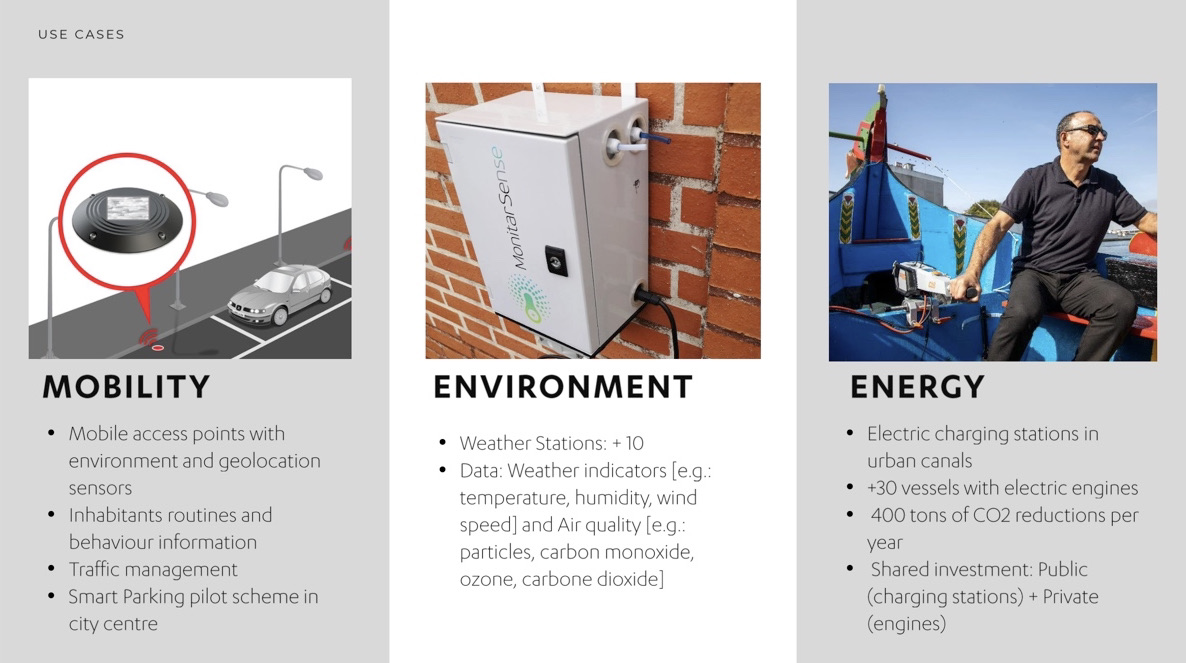
Overcoming challenges
The leadership of the project is assured by MUA. The project's leadership is considered firm, focused on the objectives of the project and on the positive impacts of each initiative on the City and its citizens. The decision-making process is based on the search for consensus through negotiation on each topic and there is an active participation of all partners in the steering committee.
A good example of this negotiation process (which is likely the hardest negotiation process that will be carried out throughout the project) is still ongoing and is related to the definition of the governance and the financing model that will ensure the sustainability of the project activities after its conclusion. Each of the project partners (and also stakeholders) involved in the project has its own expectations and visions for this model and, therefore, the mediation of the MUA is and will be extremely relevant. For instance, a possibility to pursue maybe the “association” governance model, in alternative to a “foundation” or to a nonprofit company.
In some domains there are soft tensions among partners, where the MUA plays its role of coordinator and its governance capacity; this might be considered sometimes slightly intrusive by few partners. Most of the activities where the University is especially involved, require some fine tuning because there are different views about the rigor and time length that is required for the conduction of the research activities, so negotiation needs to take place.
There are different points of view among partners about the centralization of communication activities, which relies mainly in the hands of the UA, which created a dedicated team for this purpose; on the one hand this is perceived as a limitation, on the other hand there is a full understanding of the necessity of strong coordination in order to be more impactful.
Said this, there is a very clear governance model in the project and all partners are considered in the main decisions. Moreover, the project management team is strongly empowered and reliable on the project monitoring and supervision.
The MUA has just closed the public tender to install the Electrical Charging Stations for the "moliceiro" boats in the Urban canals. This procurement was connected to the energy use case which foresees the creation of an electric charging stations infrastructure for the moliceiros (touristic boats to be turned electric thanks to new “green” engines).
This tender was preceded by a study, useful to define Municipality’s needs and establish contacts with possible manufacturers that would be willing to develop the solution that was designed by the ASC team. The Final Report from the Public Tender identifying the best proposal has been delivered so the next step will be the contract’s signature.
To date, the University implemented two procurement initiatives: the first one for the acquisition of sensors and maintenance services for the environment use case that contributes to the creation of the Aveiro Living Lab in the city center; the second one in order to support the data collection activities of the WP4. Suppliers were easy to find but difficulties were related to the length of the process, that naturally needs to attend all public procurement rules.
The procurement follows the public regulations in Portugal, which descend from EU procurement’s directives. In general, the need for transparency and equality is counter balanced by the rigidity of the procedures and lack of flexibility.
CEDES is the partner in charge for the monitoring and evaluation (M&E) process. In 2020, the M&E model was revised and now includes 5 impact indicators, 10 result indicators and 10 output indicators. Some monitoring activities run behind schedule, because data collection, useful to implement different indicators, is still at an early stage, considering that some important activities of the project (like the pilot training actions or the activities that require the Living Lab to be fully operational) have been delayed because of the pandemic.
The pandemic situation had an impact on the project, since it was not possible to get enough data - related to usage of equipment, sensors, and tools in general - that could feed the monitoring process. The mobility and environment data, for instance, will have an impact on policies, but still a significant amount of data is going to be gathered and further analyzed.
Despite this, some of the indicators are being fed: first results obtained for 4 of the result indicators are promising for now, although data collection is still ongoing (through surveys’ results sent to the participants of the activities) and will be triangulated later with qualitative feedback (through interviews and focus groups). The first editions of the Tech Lab activities, Tech City Bootcamp (https://www.aveirotechcity.pt/pt/atividades/aveiro-tech-city-bootcamp) and Code Hero (https://www.aveirotechcity.pt/en/activities/codehero) fed these 4 result indicators. Gathered feedbacks allow to know the impact of these activities in the increased capacity (in STEAM and digital skills) perceived by the trainees (or their teachers, in the case of Tech Labs) or their employability rate (for the Tech City Bootcamp trainees). The evaluation of the ASC activities, included in Aveiro Tech Week is also being carried out (this includes the 5G and Urban Challenges, Music Tech Fest Labs and Sparks, Creative Industries Commissioning and others). For now, no critical issues were raised nor specific recommendations.
The perception of the project for the general local audience is also something that needs to be monitored, so to make sure that the project will not be perceived too focused on technologies and with limited social impact.
Communication activities are coordinated by the MUA. Press-Releases with regional and national audience were held and a very good increase on social networks and website visualizations was achieved. This increase is important for the project not only because it amplifies the echo of the activities but also in terms of replicability of the actions and in terms of citizens’ engagement.
From October 2019 to October 2020, 45 pieces for communication were produced by the MUA and as direct result of these pieces, 198 publications were released in the national and regional press. From October 2019 to October 2020 2138 followers on Facebook were reached and 981 on Instagram. For the project’s website, in the same period, 14703 users were reached and 57043 page views were counted. All presences planned for Big Live Events were turned into online communication opportunities.
Also, the University of Aveiro has developed a good presence in several communication media. Under the Labour Observatory, University produces and distribute monthly newsletters; a dedicated web page has been created for the LO outputs, plus a Facebook, a LinkedIn and an Instagram presence that are updated weekly. The team also publishes regularly news about the ongoing work in the local press.
Altice Labs, as well, was involved in communication activities, mainly giving presentations in workshops and webinars held by various universities, on the subject of 5G technology and its impacts on the transformation of society and economics.
The Instituto de Telecomunicações was effective in communicating the value of the ASC’s infrastructure: through several communication activities, mainly webinars, panels and talks, awareness was raised and third-party companies and research institutes were informed and invited to test and try the new city infrastructure. As a successful example, on May 2020, after a talk during a webinar organized by Ubiwhere, it was possible few months later to engage this company in order to use the ASC’s infrastructure to deploy a smart parking application.
Although a number of target groups was addressed, the community and a more general public was not the object of some wider engagement activity.
Tech Labs with Professors and a wider Educational Ecosystem were run with a participatory approach, together with the Challenges, who saw the involvement of Startups and R&D Centers. Also, the Criatech Artistic Residences represented a way to involve creative industries in the ASC project. A number of tourist operators was consulted within the “energy stations” activities; cyclists were involved through the Mobility challenge.
The Instituto de Telecomunicações deployed some demos in the city, but these activities are still at the beginning. Up to now the reactions noticed were more related to curiosity than to concrete interest in use.
CEDES participated in the user feedback gathering by preparing surveys to collect quantitative data to feed the M&E model. CEDES is also going to interview and organizing focus groups with the participants of the different ASC’s activities - and stakeholders and other beneficiaries of the project – in 2021, in order to enrich data capture related to the project actions’ assessment.
It seems that the most important moment dedicated to dissemination and citizen engagement at the same time was the Aveiro Tech Week, held in October 2020, very useful indeed in order to provide information about the outcomes of the project to the entire population of citizens.
The Week is organized every year by the Municipality, that was bold enough to keep a double modality, both physical and virtual, with all the organizational and logistic challenges that this implied.
During the week, the MUA organized:
- 3 Talks with 14 speakers, 224 participants + online viewers;
- 9 sessions of workshops with 139 participants;
- 17 exhibitors in the Exhibit area and 1549 visitors were counted;
- The Gaming Area with 3585 visitors and the Educational Activities with 172 participants.
During seven days, in the city of Aveiro a wide range of actions, conferences, exhibitions, installations of light, sound, digital arts and performances, reinforced the positioning of the Municipality and place Aveiro in the very center of a technological path, as a pole of attraction for the technological and creative industries.
The research team form the University of Aveiro, as well as all the other project partners, has been present at the Tech Week 2020, with dissemination and engagement activities aimed at spreading knowledge about digital transformation and its impacts for the development of new jobs and competence demands.
The experience of the Tech Week is very precious and it would be extremely useful if a number of smaller events would precede it during the year, in order to engage groups of citizens that can become users of the living lab technologies. Also, considering 2021 as the last year of the implementation of ASM, it could be inspirational for the MUA and the partners to launch some co-design activities with groups of citizens in order to better figure out the legacy of the project and how the evidence gained could especially inspire future city policies.
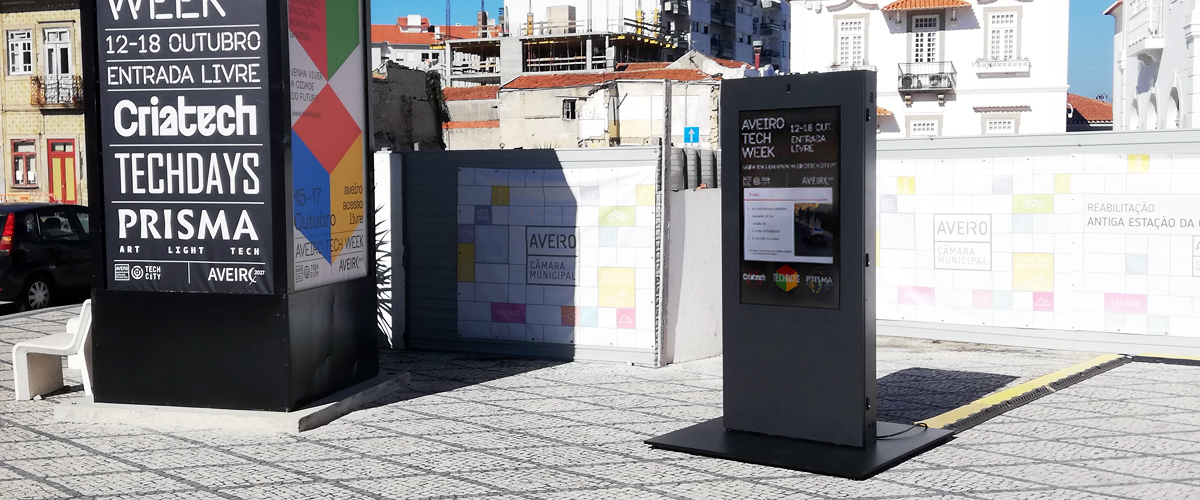
Although the success of the project also lays in the specific economic ecosystem that characterizes Aveiro (an ecosystem made of research centers, academic partners, SMEs, corporates and very proactive public institutions), a future scale up and replication of some activities that can be easily replicated in other contexts (Tech Labs, Bootcamps are two good examples) is definitely possible and expected.
The key aspect to further analyze in this sense is the core living lab infrastructure, in addition to single stream of activities. Of course, parts of the project - such as the Labour Observatory - can be replicated, bUt the key to the project’s scale up’s success probably lies in the ecosystem of stakeholders and in the dynamics that were built around a common objective.
Most of the partners are now focusing on the deployment of an infrastructure to connect the city and gather data from the city, and on a mobile infrastructure to sense the city and provide user centered applications. This can be extended to other cities once proven that a similar infrastructure can be installed and the support from the municipality is in place.
The willingness of project partners to carry on with their activities in the future will be crucial. In fact, the development of a business model that allows the sustainability of the project activities after the end of the ASC project will be proof of this and will be determinant in order to value the “momentum”. A core element is, with no doubt, the governance model that will be chosen for the continuity of the project activities. This, as well as the financing model to be defined, will “make or break” the scale up of the project.
Conclusions
The last year of the project will definitely be challenging but also full of promises to keep: certainly 2020 was a complicated year due to the pandemic; for this reason, in the light of the many goals still to take home, an acceleration in project deliverables will be crucial to keep the overall project ‘pace.
The Municipality has very ambitious targets: more than 10 projects to be executed in the Aveiro Tech City Living Lab; the renewal of the success with the 5G and Urban Challenges; an involvement of, at least, 40 new teachers in the Tech Labs, the conclusion of the "on-site" support in the classroom and the extension of the Tech Labs to 2nd and 3rd cycle of education (with 10 more schools involved).
Aveiro University aims at satisfying through the Labour Observatory the expectations from the companies and local entities: the new challenge will be to think about other structured services, adding to the diagnosis capabilities that the Observatory has developed and tested, in order to improve the sustainability of the team, as well as finding a business model that will be necessary in order to cover some operational activity costs.
Altice Labs, during the next year, expects to massively deploy 5G services in the City and provide streamline indicators for city services and quality of life. A big challenge for them will be the collection and processing the city data running at full power.
Similarly, the Instituto de Telecomunicações aims at making the network fully operational, as well as to build services that could rely on the infrastructure and that will be able to attract new partners and foster them to test and adopt the digital and physical infrastructure.
The overall fixed infrastructure (fiber, communication, computing and sensing units) is being finalized and is expected to be ready by early 2021. They also plan to expand on the use cases being deployed, covering mobility, environment and energy, and are open to include different use cases from 3rd parties.
Finally, for CEDES, the main challenges are likely to be related to defining the business model that will ensure the sustainability of the project, since each project partner has its own expectations and visions for the governance and financing model. Another challenge may be to cross-reference the various sources of user feedbacks, so that the project evaluation is as truthful and as participative as possible.
Generally speaking, the partners are motivated to conclude all the deliverables of their competence but, above all, to focus on the legacy of the project. However, as already mentioned, due to the particularity of 2020 and certainly also of the first half of 2021, a postponement request, already transmitted to the UIA secretariat, was definitely a reasonable move from the MUA.
The partnership is keen on the job done until now: the project management relies on a strong leadership played by the MUA, that also ensure a strong commitment in communication activities; the relationship with companies and local entities is a strength of this partnership that invested on this through many activities: the challenges, the awards and competitions, the Labour Observatory workshops and interviews, the procurement schemes.
Also, the 5G network was deployed in a relatively short time and the living lab infrastructure as well, despite the pandemic. Of course, from time-to-time, slight frictions among one or two partners need to be smoothed and this is not always easy considering the different domains and the many projects contained within the ASC project. On the one hand, some partners claim for more autonomy and less control/supervision, on the other hand the MUA strongly ask for concrete results and customizations of services and activities, that sometimes partners have the tendency to standardize.
The data flow captured through the infrastructure needs to be increased in terms of volumes; the citizen engagement activities must be addressed more clearly and the business model seems still far to be depicted and shared among partners.
The partnership is living into a momentum where all energies are focused to reach the goals and keep the promises made through this great EU funded opportunity: overcome the pandemic will
instill new trust, above all towards stakeholders. In some ways, all the project activities linked to the world of school, education and business creation were among those that transmitted most satisfaction to the partners; but the setup of the living lab was the result of an incredible coordination work, that will certainly be recognized as soon as the use of the technologies installed becomes more common and habitual for citizens and for the innovation ecosystem, strongly rooted in the city and around Aveiro.
The last year of the project will definitely be challenging but also full of promises to keep: certainly 2020 was a complicated year due to the pandemic; for this reason, in the light of the many goals still to take home, an acceleration in project deliverables will be crucial to keep the overall project ‘pace.
The Municipality has very ambitious targets: more than 10 projects to be executed in the Aveiro Tech City Living Lab; the renewal of the success with the 5G and Urban Challenges; an involvement of, at least, 40 new teachers in the Tech Labs, the conclusion of the "on-site" support in the classroom and the extension of the Tech Labs to 2nd and 3rd cycle of education (with 10 more schools involved).
Aveiro University aims at satisfying through the Labour Observatory the expectations from the companies and local entities: the new challenge will be to think about other structured services, adding to the diagnosis capabilities that the Observatory has developed and tested, in order to improve the sustainability of the team, as well as finding a business model that will be necessary in order to cover some operational activity costs.
Altice Labs, during the next year, expects to massively deploy 5G services in the City and provide streamline indicators for city services and quality of life. A big challenge for them will be the collection and processing the city data running at full power.
Similarly, the Instituto de Telecomunicações aims at making the network fully operational, as well as to build services that could rely on the infrastructure and that will be able to attract new partners and foster them to test and adopt the digital and physical infrastructure.
The overall fixed infrastructure (fiber, communication, computing and sensing units) is being finalized and is expected to be ready by early 2021. They also plan to expand on the use cases being deployed, covering mobility, environment and energy, and are open to include different use cases from 3rd parties.
Finally, for CEDES, the main challenges are likely to be related to defining the business model that will ensure the sustainability of the project, since each project partner has its own expectations and visions for the governance and financing model. Another challenge may be to cross-reference the various sources of user feedbacks, so that the project evaluation is as truthful and as participative as possible.
Generally speaking, the partners are motivated to conclude all the deliverables of their competence but, above all, to focus on the legacy of the project. However, as already mentioned, due to the particularity of 2020 and certainly also of the first half of 2021, a postponement request, already transmitted to the UIA secretariat, was definitely a reasonable move from the MUA.
The partnership is keen on the job done until now: the project management relies on a strong leadership played by the MUA, that also ensure a strong commitment in communication activities; the relationship with companies and local entities is a strength of this partnership that invested on this through many activities: the challenges, the awards and competitions, the Labour Observatory workshops and interviews, the procurement schemes.
Also, the 5G network was deployed in a relatively short time and the living lab infrastructure as well, despite the pandemic. Of course, from time-to-time, slight frictions among one or two partners need to be smoothed and this is not always easy considering the different domains and the many projects contained within the ASC project. On the one hand, some partners claim for more autonomy and less control/supervision, on the other hand the MUA strongly ask for concrete results and customizations of services and activities, that sometimes partners have the tendency to standardize.
The data flow captured through the infrastructure needs to be increased in terms of volumes; the citizen engagement activities must be addressed more clearly and the business model seems still far to be depicted and shared among partners.
The partnership is living into a momentum where all energies are focused to reach the goals and keep the promises made through this great EU funded opportunity: overcome the pandemic will
instill new trust, above all towards stakeholders. In some ways, all the project activities linked to the world of school, education and business creation were among those that transmitted most satisfaction to the partners; but the setup of the living lab was the result of an incredible coordination work, that will certainly be recognized as soon as the use of the technologies installed becomes more common and habitual for citizens and for the innovation ecosystem, strongly rooted in the city and around Aveiro.
About this resource
The Urban Innovative Actions (UIA) is a European Union initiative that provided funding to urban areas across Europe to test new and unproven solutions to urban challenges. The initiative had a total ERDF budget of €372 million for 2014-2020.
Similar content
